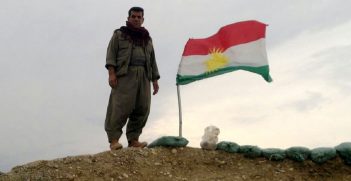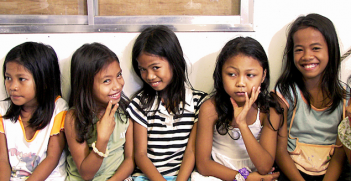2016 Nuclear Security Summit – Much More to Be Done

The fourth Nuclear Security Summit will be held in Washington from 31 March to 1 April. What will be done to carry forward the summit agenda?
Nuclear Security Summits were initiated by President Obama to focus the attention of world leaders on the need to strengthen protection of nuclear material and facilities against actions by terrorists. The first summit was held in Washington in 2010. Follow-up summits were held in Seoul in 2012 and The Hague in 2014. The 2016 summit will be the last, at least in the present series.
Nuclear security is a subject usually familiar only to specialists. Bureaucrats have used the need for secrecy to avoid outside scrutiny and accountability. This, and the lack of political attention, explains why international governance arrangements for nuclear security are weak compared with those for non-proliferation and nuclear safety. For nuclear security there are no binding international standards, no international inspections and no international reporting and accountability mechanisms. The principal treaty on strengthening nuclear security, the 2005 Amendment to the Convention on the Physical Protection of Nuclear Material (CPPNM), has yet to gain sufficient ratifications for entry into force. Some 83 per cent of nuclear materials defined as “weapons-usable” – highly enriched uranium and separated plutonium – are in military rather than civilian programs and therefore remain outside current international arrangements.
The summits have been successful in sensitising world leaders to the importance of taking steps to strengthen nuclear security. It is now appreciated that inadequate protection of weapons-usable nuclear material in any country could endanger many other countries, directly or indirectly. Thus each country is entitled to assurance that other countries are implementing nuclear security effectively.
At the outset of the summit process it was decided not to press for new international obligations but rather to encourage voluntary actions. This has contributed to the success of the summits, by ensuring that all countries invited have been willing to participate (except Russia which is staying away from this summit) and helping to achieve consensus outcomes. This voluntary approach, however, has also been a weakness: the lack of obligatory steps has meant that much-needed commitments have not been made.
There have been important achievements, including the elimination of some national holdings of weapons-usable nuclear material (countries with such materials have reduced from 32 to 24); increased international cooperation in training and sharing best practice; greater use of International Atomic Energy Agency (IAEA) peer reviews and advisory services; and a commitment by 35 of the 53 summit countries to a Joint Initiative on strengthening nuclear security implementation. This initiative includes subscribing to the IAEA’s Nuclear Security Fundamental Principles and the IAEA’s detailed security recommendations (the nearest thing to international standards for nuclear security) and committing to hosting and acting on peer reviews.
The weakness of summit outcomes is shown by the number of summit participants that did not join this Joint Initiative. Considering that the commitments in the initiative are voluntary and qualified, the fact that over one-third of the summit participants did not join is disturbing. Likewise, considering all summit participants have subscribed to statements recognising the importance of strengthening nuclear security, it is difficult to understand why the 2005 CPPNM Amendment is still not in force. This requires a further 8 ratifications. Among those countries yet to ratify, seven are summit participants, namely, Azerbaijan, Brazil, Egypt, Malaysia, the Philippines, South Africa and Thailand. Malaysia and Thailand along with Egypt have not even joined the 1980 CPPNM. In the absence of pressure through the summit process, it is up to individual countries to champion strengthening steps. In this regard, one wonders if Australia is doing all it can to persuade and assist those in its region to join this vital treaty.
The need to maintain momentum
It has been a remarkable feat to maintain the engagement of some 50 world leaders on this specialised subject for four summits, but now there is insufficient will to continue the summit process. The 2016 summit is expected to pass the nuclear security agenda to five international institutions, namely: the United Nations, the IAEA, Interpol, the Global Initiative to Combat Nuclear Terrorism (GICNT) and the Global Partnership Against the Spread of Weapons and Materials of Mass Destruction. In terms of maintaining high-level engagement, the IAEA’s Nuclear Security Conferences, held every three years at ministerial level, is seen as the principal mechanism. The next such conference will be in December 2016. Another important mechanism could be to establish regular review conferences under the CPPNM and to include a peer-review process as is done under the Nuclear Safety Convention. Such review conferences would be most useful after the 2005 CPPNM Amendment has entered into force, and would probably require a further amendment.
The goal in nuclear security can be summarised as a strengthened global architecture that is comprehensive, is based on international standards, builds confidence in countries’ nuclear security implementation and results in declining global stocks of weapons-usable nuclear materials. It is clear we are a long way from this goal. While summit fatigue is understandable, the concern is whether the alternative mechanisms being proposed will ensure momentum is maintained. The last IAEA Nuclear Security Conference in 2013 was intended to be ministerial-level, but little over a quarter of the participating countries were represented by a minister. Hopefully these conferences will be taken more seriously now that the summits are ending. It is always open in the future for leaders to convene another summit to review progress. We must hope a further summit is not prompted by a catastrophe resulting from a major security failure.
John Carlson AM was Director General of the Australian Safeguards and Non-Proliferation Office from 1989 until his retirement in 2010. He was Australia’s Sherpa to the 2010 Nuclear Security Summit. His current appointments include Counsellor, Nuclear Threat Initiative (Washington); Nonresident Fellow, Lowy Institute; and member of the Asia Pacific Leadership Network on Nuclear Non-Proliferation and Disarmament. This article is published under a Creative Commons Licence. It may be republished with attribution.





